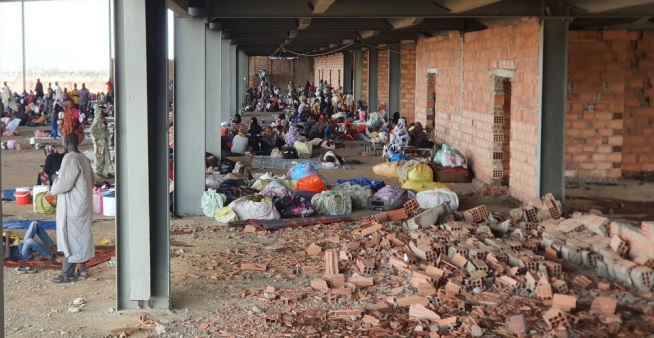
Tens of Thousands Displaced from Sennar
moatinoon
The United Nations has reported that the spread of conflict to Sennar State has resulted in the displacement of 136,000 people to the states of Gedaref, Blue Nile, and Kassala, noting that many of these individuals may be experiencing their second or third displacement.
In a statement issued the day before yesterday, the UN Office for the Coordination of Humanitarian Affairs (OCHA) said that the escalation of the conflict between the Sudanese Armed Forces and the Rapid Support Forces throughout Sennar State has forced more than 136,000 people to flee. The conflict in Singa has significantly exacerbated the suffering of civilians and increased violations of international humanitarian law.
The statement added that civilians are now facing multiple protection risks, with widespread reports of looting of their homes and personal belongings.
According to the International Organization for Migration (IOM), since June 24, 2024, an estimated 136,000 people have been displaced from various locations across Sennar State following armed clashes between the Sudanese Armed Forces and the Rapid Support Forces. The localities of Sennar, Singa, and Dinder were already hosting approximately 286,000 internally displaced persons (IDPs) before the recent escalation in fighting, most of whom had already been displaced from Khartoum or Gezira. Therefore, many of the displaced from Sennar may be experiencing secondary or tertiary displacement.
Citizens from the localities of Sennar, Singa, Dinder, and Suki have sought refuge in Rahad and Gedaref city in Gedaref State, as well as in the states of Kassala, Red Sea, and River Nile. Some residents of Singa and Abu Hajar localities have fled to Damazin in Blue Nile State, while others have sought refuge in Jebelain in White Nile State.
Additionally, an undetermined number of families have been displaced from locations across the localities of Mafaza, Rahad, and Eastern Gallabat in Gedaref State due to increasing security concerns about the situation in Sennar.
The IOM noted that the new wave of displacement from Sennar is occurring as state governments in Kassala, Gedaref, and Red Sea reopen schools that had been used as shelters for IDPs. The first wave of IDPs has been moved from these schools to other school buildings and sites. This is happening at the onset of the rainy season, which could lead to disease outbreaks due to poor living and sanitation conditions in the IDP sites.
The statement further mentioned that the conflict in Singa has significantly worsened civilian suffering and increased violations of international humanitarian law. Civilians are now facing multiple protection risks, with widespread reports of looting of their homes, cars, and personal belongings by the Rapid Support Forces amid the escalating conflict. Additionally, shops and local markets have been looted, depriving civilians of access to essential resources and heightening insecurity.
The Rapid Support Forces have reportedly occupied Singa Teaching Hospital, using patients and staff as human shields. The inability to access the hospital has severely hampered medical services, putting civilians, especially vulnerable groups such as women, children, and the elderly, at increased risk of violence, exploitation, and abuse. Humanitarian workers have reported numerous unaccompanied and missing children in the streets.

